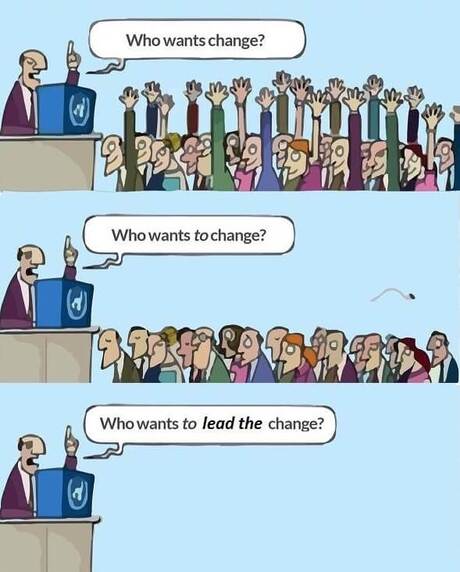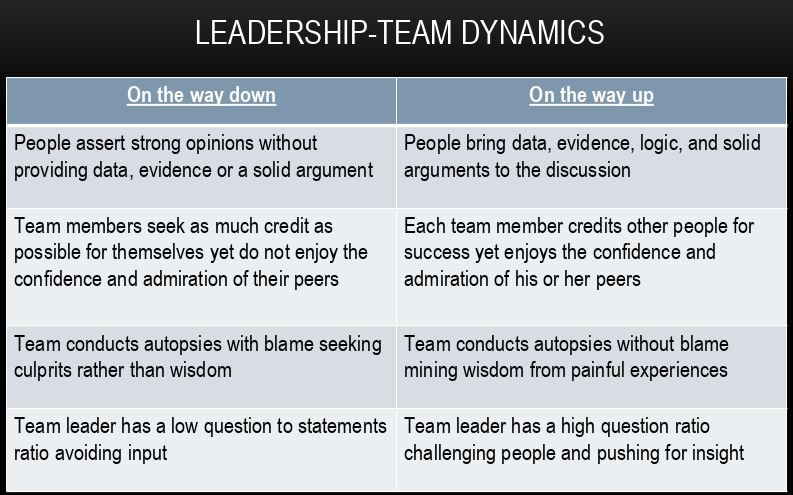|
Educators consider several factors when setting discipline policy. Creating safe environments,
meeting the needs of individual students, administering punishment equitably, and deterring behavior all play a part in discipline practices commonly used in k-12 schools. With a lack of resources and crowded schools however, it is no wonder that administrators suspend or expel 2 million high school students a year. Exclusionary discipline to include out of school suspension (OSS) is a common tool used to mitigate poor student behavior in k-12 schools throughout the United States. The rise in OSS was fueled by the war on drugs and the get tough on crime campaigns of the 1980’s and 90’s when the nation’s fear of violence by young people soared. These campaigns along with media coverage of the Columbine High School shooting in 1999, caused school districts to adopt zero tolerance discipline policies with the intent to erase, deter, and curb student misbehavior on k-12 campuses. In the wake of the Columbine massacre, the fear of the “teenage super predator” resulted in federal funding of school resource officers while student support staff including counselors and school psychologists were cut from tight district budgets. Furthermore, the 1994 Gun Free Schools Act required states receiving federal funding to expel, for at least a year, any student found bringing a weapon to school. By the end of the 1990s, every school district in the country reported having a zero tolerance policy contributing to the rise in the use of out of school suspensions. Zero tolerance policies and the use of OSS began with the good intention to make schools safer from violence, guns, and drugs. Over time however, these policies began to encompass a wide variety of non-violent student misbehaviors. As a result, schools began suspending students for class disruption, general disrespect, cell phone use, or chronic absenteeism. Larger schools experience discipline challenges that smaller schools do not. Smaller schools have the ability to cultivate better student-adult relationships that help mitigate bad behavior. According to the 2017 Brown Center Report on American Education: Race and school, schools with up to 1300 students had lower suspension rates than those with larger populations. Research has shown that the use of OSS has not produced safer schools or deterred student misbehavior. Instead the exclusion from school increases drop out rates and student disenfranchisement, disproportionally affects students of color, and lowers academic achievement. Increased Dropout Rates Students who have been suspended from school are more likely to drop out. Suspension disconnects students from a stable support system and erodes trust. This disconnection and lack of trust can lead to higher drop out rates. A Johns Hopkins University study found out of school suspension increased the likelihood of students leaving school from 16 percent to 32 percent. A study conducted by researchers at Columbia University found only one third of students who received a suspension during the first three semesters of high school went on to graduate within four years. Inequity The use of out of school suspensions disproportionately target students of color. Both African American and Hispanic students are more likely to be suspended or expelled from school than their white peers. According to the U.S. Department of Education Office of Civil Rights, during the 2014-2015 school year, 75.7 percent of in-school suspensions in Mississippi involved black students who make up 49.6 percent of the k-12 population. While there is an almost equal percentage of white students in the state (45.7 percent), only 22.5 percent of in-school suspensions involved this demographic. Several other states including Maryland, Virginia, Georgia, and Louisiana also had a disproportionate number of suspensions for black students. These racial disparities are not the result of different behavior but of different treatment. Lower Academic Achievement Out of school suspensions have a negative impact on student academic achievement. Students with at least one OSS had lower grades on average than their non-suspended peers. Missed class time and an erosion of the student school relationship contribute to this lower academic achievement. Final Thoughts Educators must shift from the use of exclusionary discipline practices and adopt positive approaches to school discipline including Positive Behavior Interventions and Supports (PBIS), restorative justice and trauma informed care. These methods have shown to improve behavior, academic achievement, and social-emotional learning. Further, they align with the ethical and moral responsibilities of educators to improve the lives of young people. Andy Jordan Principal has been reducing out of school suspensions and implementing PBIS and support systems for schools as an administrator since 2014. For more information please email him at principalandyjordan@gmail.com. For ideas on how to build relationship please see Principal Andy Jordan's Genius Hour Blog or improving school culture with assemblies blog. Blog Written By: Andy Jordan Principal
0 Comments
 Here are 5 principal hacks that every principal or superintendent should use to make their job easier. Here are some more tools to add to your administrative toolbox. 1) Google Calendar: There are two musts that school administrators, principals, and superintendents must do to improve their time management with google calendars. The first is to create a special education calendar that your special education teachers will use to schedule all of their IEP meetings on. For larger districts this will allow the special education department to see all IEP meetings and not double book the school psychologist, social worker, principal, or speech pathologist. It will also allow special education teachers to just schedule the IEP meeting without having to send out emails to 3-5 IEP team members asking what time works best for them. Having this information auto-populate on your principal calendar instead of having to answer and accept meetings will save you time. The second important use of your google calendar is giving your Secretary access to your calendar. Allowing the building secretary to see and schedule appointments for you will also save you much needed time. 2) Voxer App: If you haven't already downloaded the voxer app I recommend you do it now. This walkie talkie app allows you to communicate and leave text messages and voice messages for other important team members within your district. It's instant communication and it speeds up communication. Best part about it is that the messages are retrackable and they can not be subject to freedom of information act. It's a great app that I use to communicate with other principals and superintendents around the state. I can leave a question for my professional colleagues and they get answer me whenever they are available. This is a must use tool to improve your communication and productivity. 3) Google Docs: If you have not switched your principal or superintendent files over to google docs you need to. Having the flexibility to work on a document from your work computer, home office computer, and on your phone has been a game changer for me. I've had many administrative meetings or informal conversations and being able to access all of my googledocs on my phone quickly to reference has increased my productivity. Not only that you can easily share documents and have other members of your administrative team work on your doc at the same time. 4) Scheduling Emails: If other principals and superintendents are like me I do a lot of my work late at night and on the weekends to try and stay ahead of the never ending job. Leading a positive culture in the building I don't want to send my teachers or secretary emails late at night or over the weekends. Just like Facebook if you use a google email address you can schedule your emails to go out on a certain day and time. Make sure you give your staff some space and respect their schedule. Don't email them over the weekend or late at night. If you use the paid feature you can also pause your inbox or select only certain people that can get into your inbox. When I was working on big projects I would pause all my incoming emails except for my main secretary and superintendent. This allowed me to be more productive during the workday. 5) Be Visible: Being active in your building and visible during passing periods and viable in the classrooms is crucial in being a good leader and running a good building. If you are locked up in your office all day you start getting out of touch of what is happening in your building. It might take a lot of your time to get out and to be active but it is certainly time well invested. Anytime that you have meetings outside of your building or if you are gone for most of the day make sure to do a walk through in every classroom at least once in the morning so you are visible and people know you are in the building. Same thing if you have been gone most of the day when you get back to the school make sure to do a quick walk through to ensure that people see you. They say students misbehave when the teacher is absent this is true of the administrator if they know the principal is gone they tend to push the limits more so make sure you are seen and they know you are there even if your not. Blog written by: Principal Andy Jordan As of August 1st, 2020 there are more than 1,900 teaching positions unfilled in Illinois according to the Illinois State Board of Education website. Last year according to the IASB.com website 56 percent of school districts surveyed felt they had a problem with teacher shortages and 22 percent felt they had a major problem with teacher shortages. Furthermore, a follow up survey showed that 92% of southern Illinois districts had issues with teacher shortages in 2019.
According to USAtoday.com In an exclusive USA TODAY/Ipsos poll, 1 in 5 teachers say they are unlikely to go back to school if their classrooms reopen in the fall, a potential massive wave of resignations. With Illinois already being in a teacher shortage and a potential wave of teacher resignations occurring if schools do come back to school their could potentially be a wave of teachers that resign. These are all series issues concerning schools and districts come 2020 and 2021. The other angle that concerns me that I haven't heard anyone talk about is the effect of COVID-19 in our schools and how that will affect our teaching staff. I pray that zero students and teachers get COVID-19 this Fall and school year, but realistically that probably isn't going to happen considering that we are in a world wide health crisis. Teachers and administrators tend to be overworked and overstretched and it couldn't be more true at small schools where budgets are insufficient and staff are underpaid. These rural overworked staff have more stress and tread on the tires compared to other well funded fully supported districts. I foresee teachers and administrators across the state getting COVID-19 and some passing away from the disease. I applaud the work of our educators and our school staff and the efforts and work they are going through to keep our schools and students safe. I feel uneasy about the teacher pipeline next year and I fear we will have a large amount of our teacher workforce quit the profession or pass away from the disease. Hopefully, I am wrong but with how teachers and administrators are viewed nationally and their average pay rate with their degrees compared to people with same level of degrees outside of education I am unsure that we will be able to close the Illinois teacher shortage crisis or change the curve to bring the teacher workforce back up to where it needs to be. Blog written by: Andy Jordan Principal Do you remember the days when school was fun and the gyms were packed with school pride? I believe one of the most important factors in operating a great school is school culture and the strong relationships within the school. According to a 2015 Gallap poll only 32% of Juniors in school feel like they are engaged. An edweek.org blog also stated that 44% of new teachers that enter the profession will leave teaching within their first 5 years. One way to cultivate school culture is by holding monthly assemblies in the gym with your staff and student body. After hosting monthly assemblies for three years as an administrator I'm surprised that more schools don't invest the time to cultivate their culture. Here are some of the benefits of hosting monthly assemblies: 1) Increased culture: We were able to teach kids what we wanted from them every month by highlighting all the positives that our students and staff were doing on a regular basis. It was a great way to reinforce the positives and build off of our daily PBIS system that we incorporated in our building. 2) Decreased student absences: One trend I picked up on (thanks to my rock-star secretary) over a few years of hosting our school assemblies was that our attendance rates on assembly days were near perfect. Students knew when our assemblies were, they enjoyed them, and they didn't want to miss them. 3) Improved student discipline: All administrators have had their fair share of student discipline issues some more than others. Over the years of hosting assemblies I've always enjoyed the fact that I've never had a student write up or behavior problem during an assembly. And our frequency of student write-ups on assembly days dropped significantly. 4) Positive Public Relations: Post your school assembly pictures on Facebook and share all the positives with your school community. Showing parents that students are having a blast and building great memories in your school will foster positive relationships with the community and give your parents something to talk about with their children Depending on your school culture and how traditional schools have been operating for decades monthly assemblies can seem like an uphill battle. You might receive push back that you are taking away instructional time from the students and teachers. I would agree with that; however, I would argue that the improved culture with students feeling better and teachers feeling better that you will receive better results and the time spent will be well worth it. Here are some ideas for you to hit the road running for your first assembly:
1) Create a template and stick to it 2) Reward what you value in your school from academic success on state tests to students/staff helping each other out 3) Recognize students in sports and clubs (research shows that student who participate in extra-curricular activities are more successful). Student and athlete of the month are also good ideas. 4) Recognize your staff this will show your students that staff and teachers are super important and valued 5) Bring in guest speakers to spice up your monthly assemblies and keep the momentum going. Some of my favorites include BMX bikers, hypnotist, gold medalist, and motivational speakers. There are many templates that you can use that best fits your school, but the most important thing is to take the leap and start having fun in your school. Your students and teachers will appreciate it. Blog written by Andy Jordan Being part of a great leadership team and work environment is crucial to running a successful school over a long period of time. As principals or superintendents it should be our priority to create excellent working conditions for our leadership team and teacher leaders to elevate their skills and productivity. It's also important if you are part of a negative team with a poor superintendent or school board it might be time to start looking for another administrative job. The picture above is from Jim Collins book How The Mighty Fall. These are great tips for principals and/or superintendents looking to improve their leadership team and also These are also good reminders of what it looks like for schools that are going down the wrong path.
Here are some tips as superintendent on improving and moving your school forward: 1) Make data informed decisions and invite stakeholder involvement 2) Build your administrative team and welcome deep discussions and highlight their successes 3) Work on growing a successor and other leaders within the building. If you leave the district as a superintendent and there is a leadership void you have done your district a disservice 4) When hiring teachers or principals and its between the "local person" or the "other person" make sure you hire the "best person" every time 5) Put your school in the best position by hiring the most talented person instead of the person with the most experience Blog written by: Principal Andy Jordan The ability for you to effectively engage in difficult conversations may not be easy or fun, but it is crucial for you to be able successfully navigate every difficult conversation that comes your way. As an administrator who is able to successfully confront and handle conflict is key to running a great school.
1. Get the facts. Whatever the situation student discipline, parent complaint, staff issue make sure you get the facts before the conversation and make sure the person reporting it is coming to you with first hand information. Seek out anyone else who could be involved in the situation if necessary to gain more knowledge about the incident. Having good situational awareness and knowing your personal/students/parents is key to being able to identify how reliable the information is. 2. Put yourself in their shoes. After getting the story ask yourself why that person would have done something like that. Is this the first time something like this has happened? Are their other underlying issues going on that caused this action? What is the rapport between the two parties? Who has a good connection/insight on the person that you could potentially ask if needed. 3. Walk through the conversation. Be prepared to have a couple of options for discipline thought out sitting in your pocket depending on how the conversation goes and what you determine after discussing it with them. Could be anything from a misunderstanding (no discipline), warning, detention, suspension, termination, or write up. Anticipate the worst case scenario of the person yelling and cursing at you, destroying property, or slamming doors and be prepared to respond and not be rattled. Be prepared to stop them immediately and tell them that they have now escalated the situation and it's now in their best interest to stop talking and take a minute to calm down. 4. Stay calm and execute the conversation. Be prompt and get to the point right away. Tell them why they are their and what they are accused of. Pretend that their parent (or superintendent) is sitting in the room with you and treat them how you would want to be treated. Stick to the facts, don't add any bias or interpretation to the conversation let them speak for themselves. After they present their case then determine what is appropriate discipline (if any), deliver the consequence, and then end the conversation. 5. Document, document, document. Believe it or not after having a difficult conversation stories sometimes change and words can be twisted. It might be a small issue, but depending on the circumstances of the situation and person(s) involved it could escalate into a bigger problem quickly. Make sure to document the conversation and what was said and keep those notes on file. It's much easier to go back and reference your notes if questioned by the school board or the superintendent. Blog written by Andy Jordan |
Andy Jordan, Ed.S.Andy Jordan is a first generation college graduate who has dedicated his career to improving schools and fighting educational equality. Please follow and comment as we discuss the educational process. For more information and for videos please visit Principal Andy Jordan's YouTube Channel: https://www.youtube.com/c/AndyJordanPrincipal Archives
March 2021
Categories |



 RSS Feed
RSS Feed
